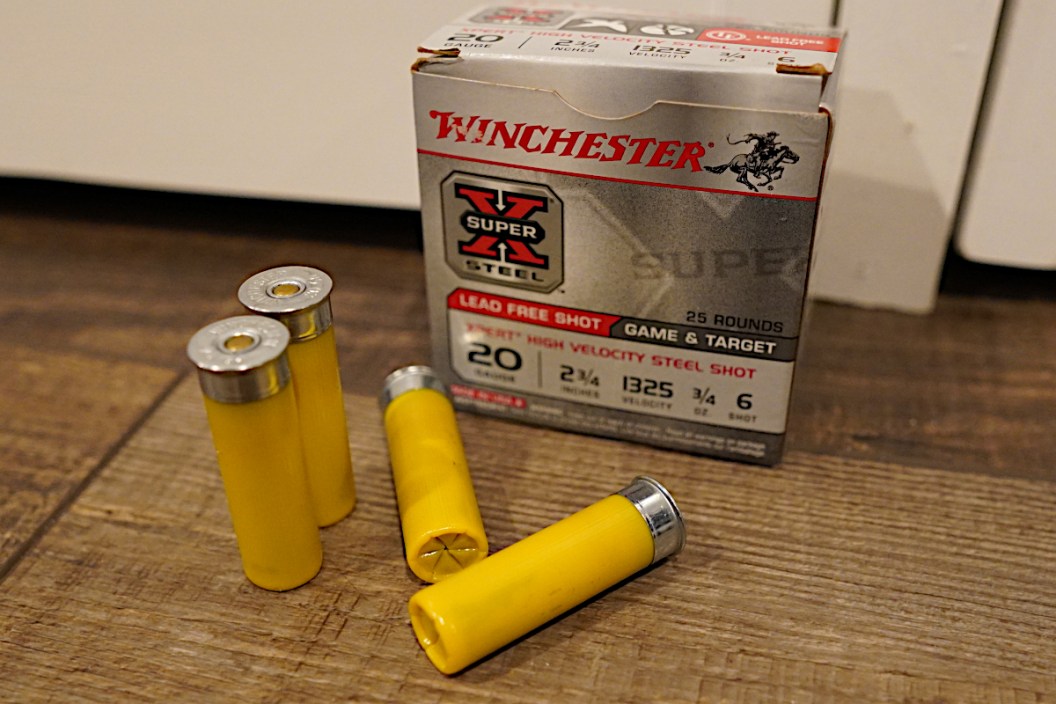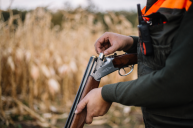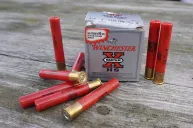When it comes to steel shot vs lead shot, there are the things to know.
In the world of bird hunting, few things can drive a greater debate among hunters quite like the lead vs steel ammo argument. The use of lead shot was once a tradition here in the U.S. and there was little reason to consider anything else. That was, until 1987 when the U.S. Fish and Wildlife Service instituted a total ban on the use of lead shot in public hunting areas.
This caused a conundrum for many hunters, and gun manufacturers. Because lead loads were such a standard, most guns were not even built for the steel pellets that became a common standard shortly after. Because of the numerous issues, the idea of shooting steel was not a popular one, especially with dedicated waterfowl hunting enthusiasts who were used to the advantages of lead pellets.
When it comes to choosing between lead and steel shot, there are many factors to consider before you start throwing pellets downrange. Today we will examine this debate including why it is even a thing in the first place.
Why is lead shot illegal to use in most cases?
To understand why this is even a debate, it is important to understand why the federal government decided to ban the use of lead shotshells. Basically, the U.S. Fish and Wildlife Service did a series of studies that showed ducks and other waterfowl were ingesting pellets that failed to find the mark, resulting in lead poisoning for some birds. In 2000, U.S. Fish and Wildlife estimated the ban on lead shot had saved approximately 1.4 million ducks from a poisoned fate just in the 1997 season alone.
While we generally talk about steel vs lead as it relates to waterfowl, the use of steel has taken off a bit since the ban was first put in place. To the point some hunters even prefer it for some upland birds like pheasants. It's probably safe to say none of that would have ever happened had the harmful effects of lead not been discovered.
And while there are alternative non-toxic shot options like tungsten and bismuth which have proven popular, steel shot is probably still the most popular ammo choice. Especially for anyone hunting a protected wetlands area.
What is the difference between lead and steel shot?
The biggest difference between steel and lead is simply in weight. Lead is heavier and hits harder. You are also going to get greater distance. That weight also gives lead better ballistics. You will always get more FPS of muzzle velocity out of lead than steel, which is comparatively low density, usually leading to a more open shot pattern. Lead is also subject to deform travelling through the barrel, which is what allows it to work so well with improved cylinder and full chokes.
By contrast, steel is much harder, and does not deform. Some hunters prefer a modified choke or a completely open choke for a denser steel shot pattern. Because steel shot loads are so hard, there are also concerns about abrasion and damage to the firearm to take into consideration. Steel shotshells are going to be rougher on the barrel than lead, which is one of the main reasons many hunters do not like steel. No one likes an extra trip to the gunsmith for repairs.
Another big difference is simply the shot count in each load. As Pheasants Forever notes, steel shot loads tend to take up more space than lead depending on the shot size used. Fortunately, ammo manufacturers have found some ways to combat this problem over the years without losing gunpowder and velocity, but it was a long road towards getting pellet counts that were comparable to lead to fit into a 2 ¾ or 3-inch load.
Does steel travel further than lead? And which is more stable?
Once again, to answer this question we must consider the weight of steel vs lead. Just think of trying to throw something light directly into the breeze on windy day vs something heavy. The heavier object is always going to travel further than the lighter one. It's the same concept with steel shot vs lead shot. You are always going to get a better range with lead. Steel is much more likely to have an unstable pattern and a shorter effective range simply because the shot is not going to cut through the air as well. Steel is also going to be hitting the target with less energy, which is one of the major reasons many hunters do not like it.
Because it is so light, steel shot is also less ideal for windy conditions and can lead to fewer pellets in the target. Ammo manufacturers have improved things slightly by changing the shape of the shot to create better pattern density. The type of gun you are using matters too when it comes to the effectiveness of steel. Newer shotguns have also been specifically designed with steel shot in mind, which can also help improve pattern percentages. If you are planning to use an older shotgun made prior to the early 1990s, you are probably better off going with tungsten or bismuth which deform similarly to lead while still retaining non-toxic properties. Just because older shotguns have barrels that were specifically designed with lead shot in mind.
The use of non-toxic shot is important.
We know some hunters might get frustrated with the idea of using steel shot simply because it does have many disadvantages over lead. However, looking at the broader picture, using non-toxic shot is important to conservation. No one wants to see our waterfowl dying off because of lead poisoning. It's hard enough hunting them without seeing a dip in bird numbers adding to the challenge. The key to using non-toxic shots like steel is to take the time to test it thoroughly in a variety of conditions. Shot tests on paper can help you better pattern your firearm and will make you more confident when you are finally drawing a bead on your target regardless of the steel shot size and load type.
Products featured on Wide Open Spaces are independently selected by our editors. However, when you buy something through our links, we may earn a commission.
For more outdoor content from Travis Smola, be sure to follow him on Twitter and check out his Geocaching and Outdoors with Travis YouTube channels.
NEXT: THE AXIS DEER AND HOW THEY'RE IMPACTING PARTS OF THE UNITED STATES
WATCH





